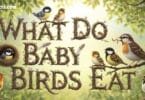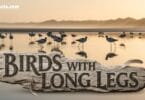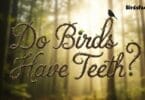Birds Of South Carolina. South Carolina has many great places to bird, including its beautiful coastlines and waterfalls. Today, we will be talking about birding in Palmetto. We will tell you all about the local birds including their habitats, how to find them, what to look out for, and what dietary preferences. Let’s now talk about South Carolina’s most popular backyard birds!
Categories – 500 Birds
There are 500+ bird species in South Carolina. It’s enough birds to keep any birdwatcher busy. We can’t list them all here. We will give you a sample of birds, and we will also divide them into seasons so you can find them when you need them. These are the categories we will use to sort them:
- Year-round Resident birds
- Birds of Spring and Summer and Early Fall
- Winter and Fall Birds
You’ll now have a list of birds you can look for all year. We’ll also give you some tips and tricks, like where to find these birds when they’re not in your yard. Let’s start with our year-round resident birds.
South Carolina’s Year-Round Resident birds
They love South Carolina very much and can be seen at any time of year. The birds listed below are happy to be spotted, no matter what the weather is like. Keep an eye out for the following year-round resident birds in South Carolina.
- Carolina Chickadee
- Carolina Wren
- Red-bellied Woodpecker
- Tufted Titmouse
- Northern Cardinal
Carolina Chickadee- Poecile Carolinensis
- Coloration & Markings:Carolina Chickadees are small and fanning-tailed with gray wings. They have a white underbelly, facially, and breast. A black bib runs from the neck to the throat. The large black cap covers the top of the head and stops at their eyes.
- Size These are tiny birds that measure in at just 3.9 to 4.7 inches in height with wingspans of 5.9 and 7.9 inches.
- Habitat These birds can be found in almost any forest area. They also frequent backyards and parks, especially where large trees are present.
- Diet: Carolina Chickadees do not need to know anything. They are fond of suet, crushed peanuts, and Black Oil Sunflower seed and will return for more as soon as they notice you have them.
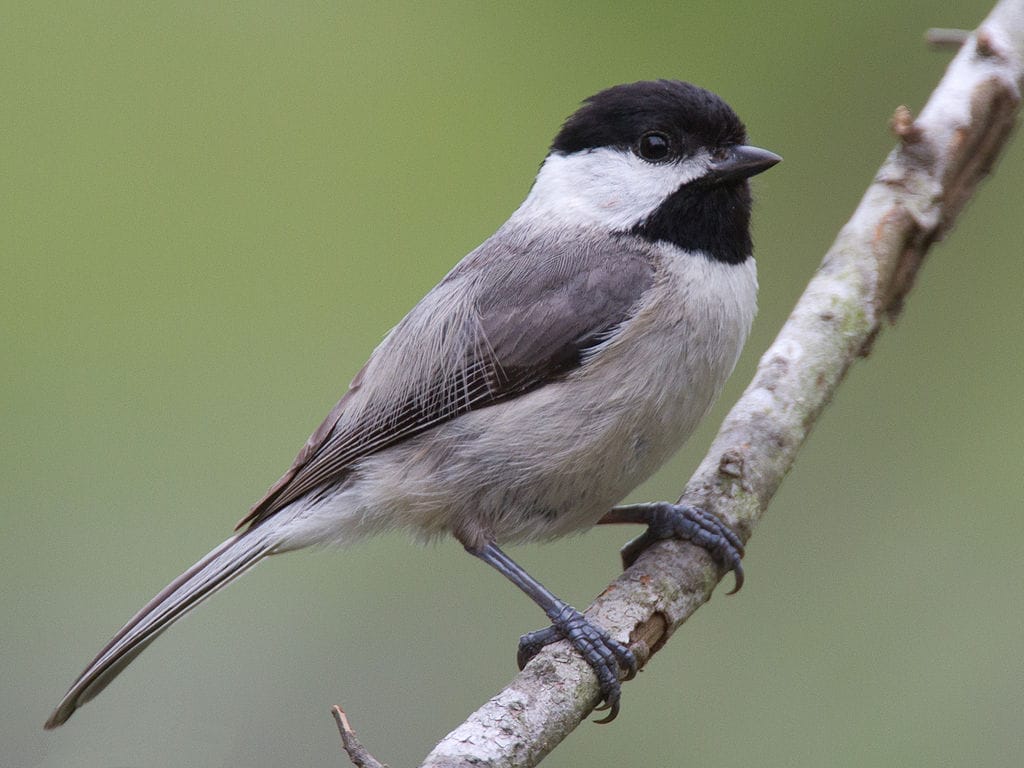
Carolina Chickadee
Carolina Wren – Thryothorus ludovicianus
- Coloration & Markings:Carolina Wrens are medium-sized with medium-sized tails and a checkered black/white edging on their wings and tailfeathers. The bird’s breast and underbelly are light yellow-orange. Facially, it has a small, white bib as well as some white before the neck. It also has large, white eyebrow marks. The face is covered in a white dot with black dots. Just behind the eyes is a brown line that runs to the back. The bird’s head is dark brown with a slightly curled black bill.
- Size These birds are approximately 4.7 to 5.5 inches long with a wingspan around 11.4 inches.
- Habitat These birds love brambles and thickets because they offer safety when foraging. If you have bushes or brush, they will come to your backyard feeders.
- Their diet: Although they eat a lot of insects, these birds also love seeds and berries. You might be able to lure a Carolina Wren by mixing chopped cherries or black oil sunflower seeds with some strawberries and cherries.

Carolina Wren (Thryothorus ludovicianus) on a branch with a blue sky background
Melanerpes carolinus – Red-bellied Woodpecker
- Markings and Coloration:Redbellied Woodpeckers are zebra-striped on their backs, wings and tails. Their breast is white and their underbelly contains some black peppering. You will see faint red splotches on the breast when the bird is closer. These birds have a white face with some faded and striking red caps. They also have long straight black bills.
- Size These birds are approximately 9.4 inches long from head to tail, and have wingspans of 13 to 16.5 inch.
- Habitat These birds love to spend time in deep woods, particularly around oaks and Hickory. If you leave something they love, they will return to your feeders.
- Black Oil Sunflower seeds and suet are the favorite foods of this bird, which will keep them coming back for more.

Red-bellied Woodpecker
Baeolophus bicolor – Tufted Titmouse
- Colouration and Markings The Tufted Titmouse has a blue-gray back and wings and a medium-sized, white tail with a breast and underbelly. There are faint traces of peach coloration just under the wings, along with white side panels. Facially, these birds have mostly white faces. They have some blue coloration below the eyes and full gray-blue coloration up to the top. They have small crests with a distinct black square on top of a slightly curved, black bill.
- Size These birds are between 5.5 and 6.3 inches long with a wingspan from 7.9 to 10.2 inches.
- Habitat These birds love Evergreen and deciduous forest, but they often venture out to see orchards and parks.
- Diet These birds are easy-going. They love peanuts, black oil sunflower seeds, and suet.
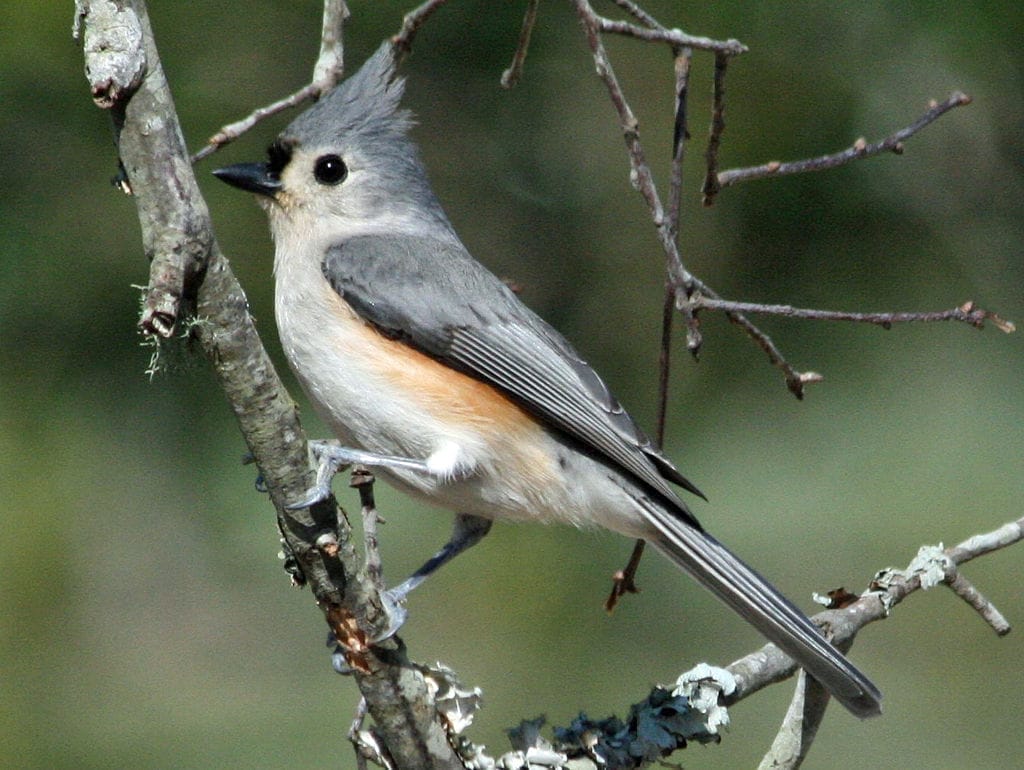
Tufted Titmouse – Baeolophus bicolor
Northern Cardinal – Cardinalis Cardinalis
- Coloration & Markings: The male Northern Cardinal is strikingly red, right from its tip to its crest. Sometimes you might see gray in its plumage, but other than that, the only color changes are the black mask which extends to the neck and the conical orange bill. The female Cardinals will be a soft, brown color throughout, with traces of red in the plumage. However, they are just as stunning. These birds are what inspire people to birdwatch every day.
- Size These birds are 8.3 to 9.1 inches long with wingspans of 9.8-12.2 inches.
- Habitat These birds often visit cities and towns when they’re not straying too close to the forest’s edge. As long as they are given thoughtful offerings, these birds will visit backyard feeders.
- Diet –Northern Cardinals love a variety of foods such as Safflower, Black Oil Sunflower seeds and White Proso Millet. If they are nearby, you can also leave out berries and chopped apples to them.
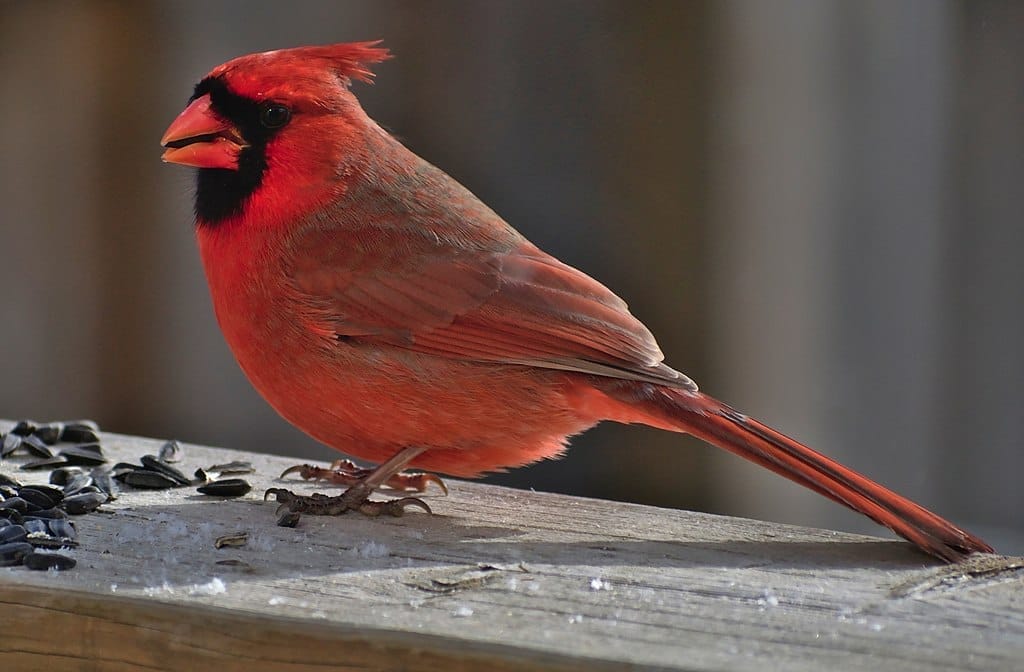
Northern Cardinal
South Carolina’s Birds of Spring and Summer, Early Fall
South Carolina’s spring, summer and fall seasons are vibrant and some birds love them. It’s a wonderful time for birds, and also a great opportunity for you to enjoy nature and see new birds up close. These birds are best seen in spring, summer and early fall.
- Northern Mockingbird
- Swanson’s Thrush
- Scarlet Tanager
- Rose-breasted Grosbeak
- Indigo Bunting
Birds Of South Carolina
Northern Mockingbird – Mimus polyglotto
- Coloration & Markings:Northern Mockingbirds are gray with gray wings and backs. They also have long, thin tails and white outer feathers. This bird displays a white patch on each wing during flight and has distinctive wingbars. Mockingbirds have white breasts and white-gray underbelly. They are also white from the chin to the tip of the bill. Their cheeks are often lightly grayed. This bird has a soft gray upper portion. There is often a line of black between the front of the eyes and the bill, which is curved in a slightly curved way.
- Size These birds are 8.3 to 10.2 inches long with wingspans of 12.2 and 13.8 inches.
- Habitat These birds are often found at the forest’s edge, or in parks and suburbs. They will happily visit a feeder that is well-stocked.
- DietNorthern Mockingbirds prefer fruit but eat mainly insects. For best results, try sliced oranges or apples.
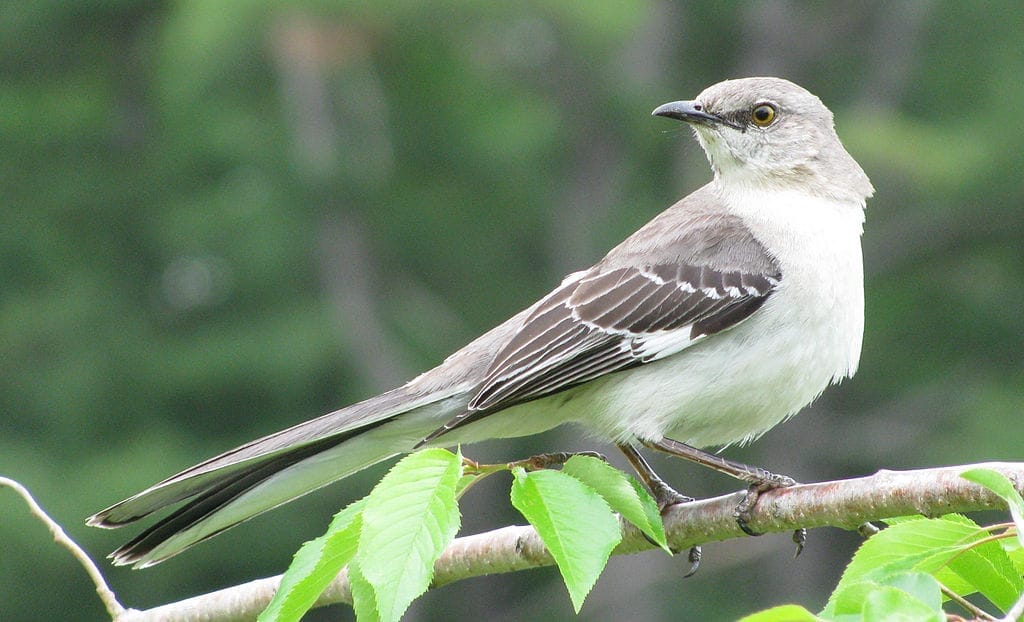
Northern Mockingbird
Swainson’s Thrush- Catharus ustulatus
- Colouration and Markings:Swainson’s Thrush birds have a brown back and medium-sized tails. Their breasts are white with black spots that fade to white as they reach the underbelly. This bird’s facial features include gray spots on the chin and throat. The rest of their face is a soft gray or dark brown. A distinctive yellow or brownish-yellow eyering will be visible. These birds have straight, short bills that are often black or yellow with black tips.
- Size: These birds measure in at 6.3 to 7.5 inches from tail to tip, with wingspans of 11.4 to 12.2 inches.
- Habitat Coniferous and deciduous forest are the Swainson’s Thrush’s favorite places, but they may occasionally venture out to suburban backyards.
- Diet These birds eat mostly insects, but they also like red fruits and berries. To see if they are attracted to chopped strawberries and cherries, try some.

Swainson’s Thrush
Scarlet Tanager – Piranga olivacea
- Markings and Coloration:Scarlet Tanagers look amazing and will get your heart racing quickly. The breast, back and underbelly are rich scarlet colors, while the wings and small forked tails are all black. The wings can sometimes have a yellow mark at the shoulder, but the majority of the time they are black. The scarlet coloration on the face becomes slightly more richer, and the bird has a medium-sized, stout yellow bill.
- Size These birds are approximately 6.3 to 6.7 inches long with wingspans of 9.8 to 11.4 inches.
- Habitat These birds are more comfortable nesting in Evergreen and deciduous forests, but they will also wander to areas with dense vegetation or well-stocked feeders. This is one bird that you won’t want to miss, so make sure to leave something for them!
- DietScarlet Tanagers will eat any type of berry. While fresh is the best, a variety of dried berries can be used in pinches to help these birds.
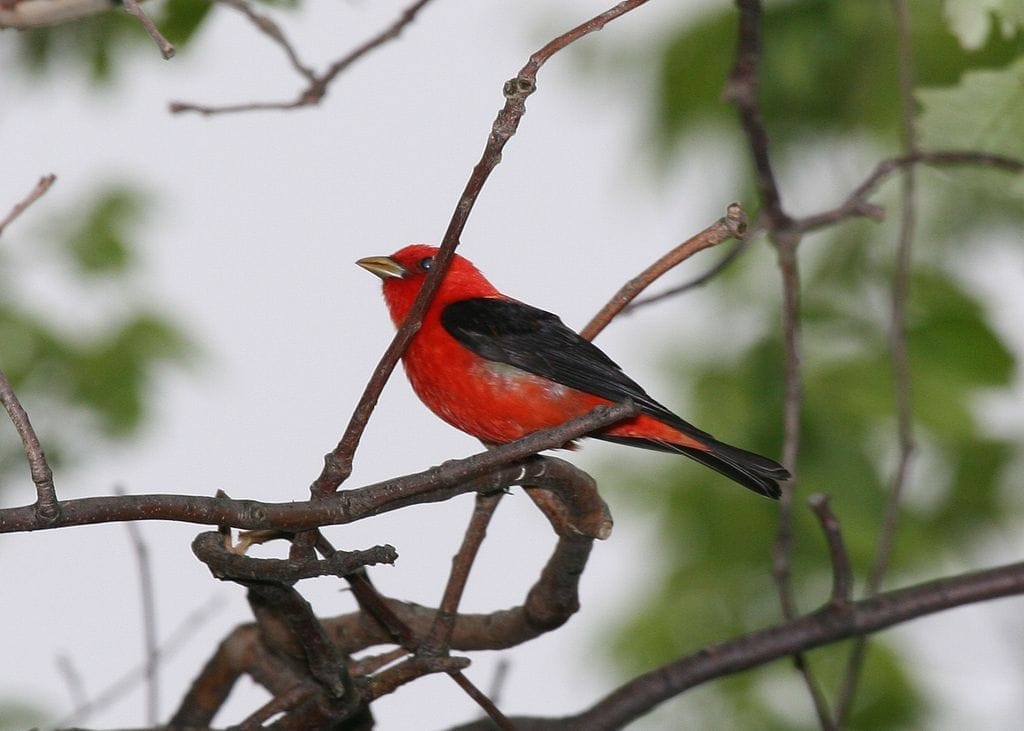
Scarlet Tanager
Rose-breasted Grosbeak–Pheucticus Ludovicianu
- Coloration & Markings:Rosebeaked Grosbeaks are black with black wings and backs. The wings and reddish-pink undersides of the bird when it is flying show white splotches. The medium-length, black and white tails are straight at the ends. They also have a snow-white breast and a rosy red half moon under their throats. This coloration ‘bleeds’ down the middle of the breast before it becomes completely white underneath and at the underbelly. This bird is black on the face and has a long, thick, ivory-colored bill. The females are a different color, as they are primarily brown with streaking over their eyes and a prominent white mark above them. When they are in flight, their wings will appear yellowish-green.
- Size These birds are 7.1 to 8.3 inches long with wingspans of around 11.4 to 13.2 inches from wingtips to wingtip.
- Habitat These birds are fond of coniferous, deciduous and mixed forests. However, they also enjoy wandering around the edges and often stopping at backyards and parks to forage.
- DietRosebreasted Grosbeaks can be easy to please. Just load your feeder with peanuts, Safflower and Black Oil Sunflower seed mixtures.

Rose-Breasted Grosbeak
Indigo Bunting – Passerina cyanea
- Indigo Buntings:Indigo Buntings look great. They are completely indigo-blue all over, with the highest concentration in their face. These birds are medium-sized and have gray bill. The Juvenile males will have a mixture of blue and brown while the female Buntings will be mostly brown. Some streaking can be seen on the breasts and some blue flecks throughout. They may also show whitening around the throat.
- Size These birds are 4.7 to 5.1 inches in length with wingspans of 7.5 to 8.7 inch.
- Habitat These birds love dense vegetation and spend a lot of time in brambles or thickets to get the relative protection they need.
- Diet These birds love small seeds, so they will appreciate a mixture of Nyjer thistle seeds and small or broken up Black Oil Sunflower seeds.

Indigo Bunting perched with one leg forward on tree branch in front of dark moody background.
South Carolina’s Winter and Fall Birds
Some birds love it cold, and that’s okay. Others feel the exact same. The cold can be a great way to get your heart rate up.
- Ruby-crowned Kinglet
- Eastern Phoebe
- Blue-headed Vireo
- Brown Creeper
- Brown Thrasher
Birds Of South Carolina
Ruby-crowned Kinglet – Regulus calendula
- Coloration & Markings:Rubycrowned Kinglets have soft graybacks and gray wings with some yellowish-green coloration. There is also 1 wingbar per wing. Their ‘dirty’ white breast is composed of gray and white coloration. The underbelly is made of gray and white coloration. Facially, they are white from the chin to the underside of the bill. Most of their face is soft or darker gray with a small, vibrant, red crest. The bird is medium-sized and has a straight, black bill.
- Size These birds are 3.5 to 4.3 inches long with wingspans of 6.3 to 7.1 inches.
- Habitat These birds prefer coniferous or deciduous forests, but they will happily roam the countryside in winter foraging and visiting backyards and parks to find what they can. Here’s where you come in.
- DietBerries, seeds and other fruits are the best way to enjoy this bird. Add some chopped strawberries or cherries to the dish, along with Nyjer thistle and Black Oil Sunflower seed. This will make the birds love you.
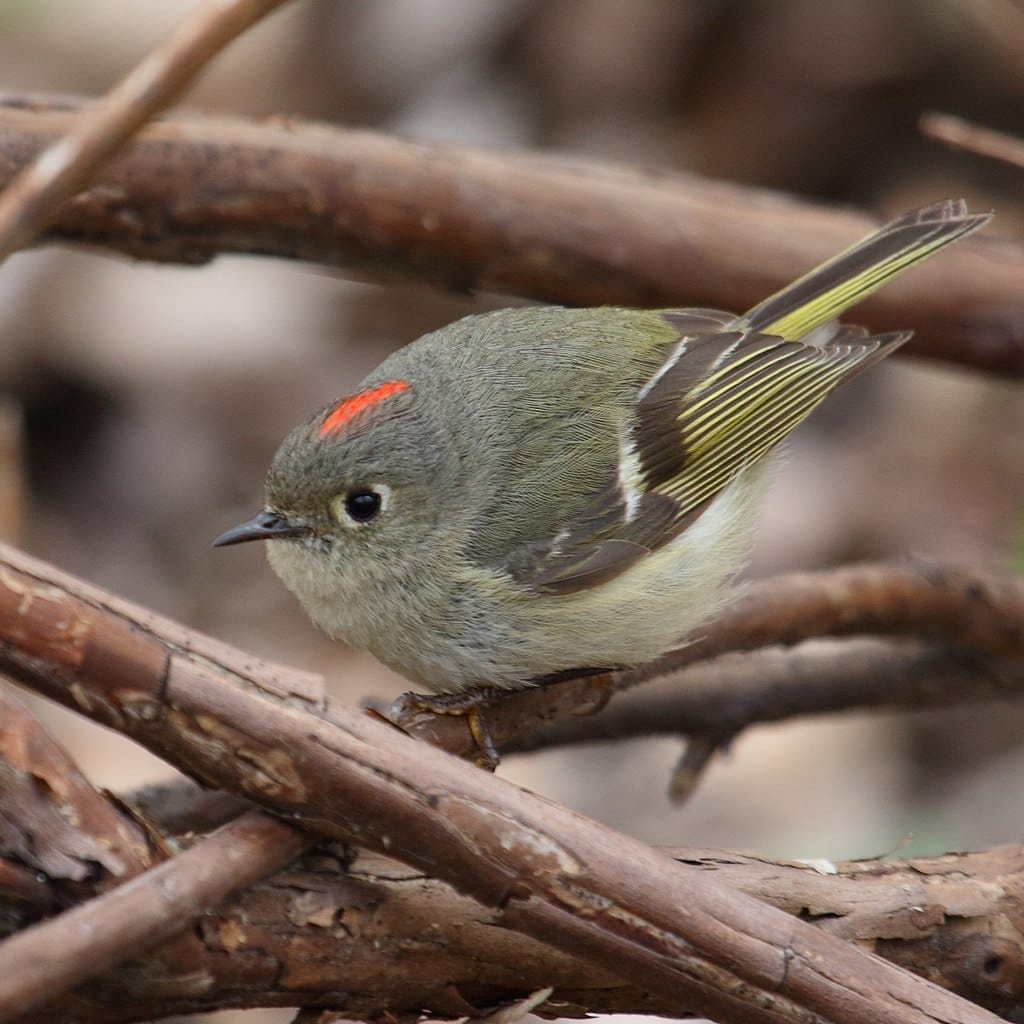
Birds Of South Carolina
Eastern Phoebe- Sayornis Phoebe
- Colouration and MarkingsEastern Phoebes are simple, but stunning in color. Their backs and wings are brownish-gray, while their tails and wings are long, with some white highlights in the wings. Their breasts and underbelly are snow-white, while the white coloration extends to the throat level where it is slightly visible above the wings. They are a light gray with a dark center. The upper half of their faces is a lighter gray. They have straight, medium-sized black bills.
- Size: These birds are 5.5 to 6.7 inches long with wingspans of 10.2 and 11 inches.
- HabitatEastern Phoebes are most comfortable in open spaces, such as parks, fields, and forest edges. You should also leave something for them in your backyard.
- Diet These birds eat mostly insects, but they also love berries. They love elderberries, so consider adding them to your feeder along with dried mealworms or crickets.
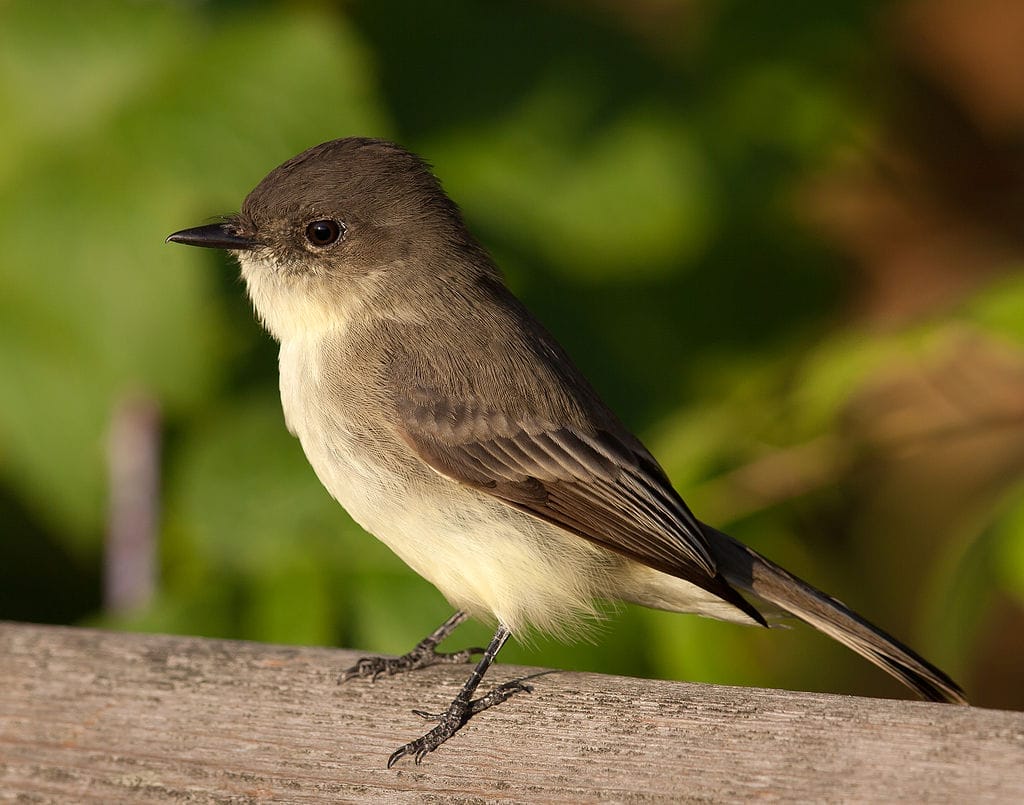
Birds Of South Carolina
Vireo solitarius – Blue-headed Vireo
- Colouration and MarkingsBlue-headed Vireos are beautiful in their delicate, beautiful coloration. Their back and wings are a mixture of yellowish and gray, with 2 white wingsbars on each side and a medium-length tail that is the same as the wings but with white edges. Their underbelly and breast are snow-white, while the yellow-green flanks just below the wing provide a contrast. The white coloration extends up to the bill and then thins down. This bird is light grayish-blue from the cheeks up with white “spectacles” just in front their medium-length straight black bills.
- Size These birds are 4.7 to 5.9 inches long with wingspans of 8.7 to 9.5 inches.
- Habitat These birds prefer the boreal and montane forests, but they will occasionally venture out to forage.
- Diet These birds rarely visit feeders, but they love fruit. To see if you can attract a Blue-headed Vireo, try adding some chopped apples and cherries.
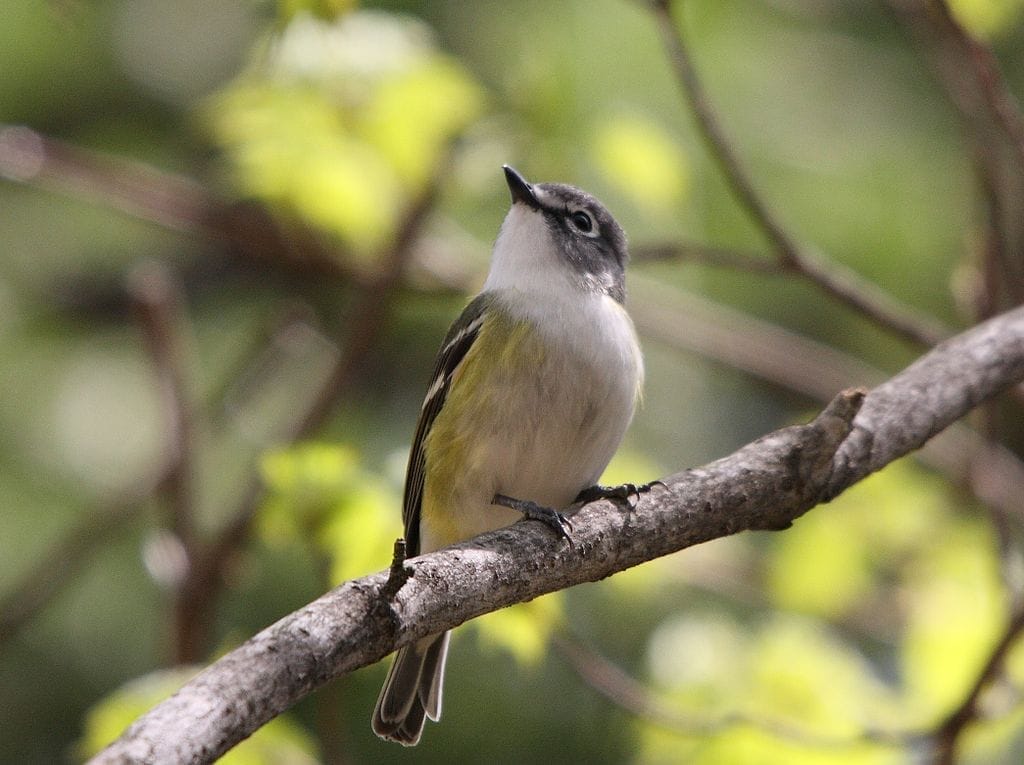
Blue-headed Vireo
Certhia americana – Brown Creeper
- Coloration & Markings:Brown Creepers look pretty with their brown backs, and wings with buff streaking or heavy white. Their long tails are not streaked and their breasts and underbelly have a paper-white color. The white extends upwards, reaching the bill and extending horizontally to reach the cheeks. The rest of the face has the same brown/buff streaking as the bill. These birds also have long, curving black bills.
- Size These tiny birds are 4.7 to 5.5 inches long with wingspans of 6.7 and 7.9 inches.
- Habitat These birds spend most time in Evergreen or deciduous forests when it’s warm. However, they can be seen roaming in winter and soon find themselves in backyards and parks.
- These birds love black oil sunflower seeds and corn, but suet and chunky peanut butter will give you the best results. These power-foods can give hungry birds an extra boost of energy in winter, so make sure you have these foods on hand.
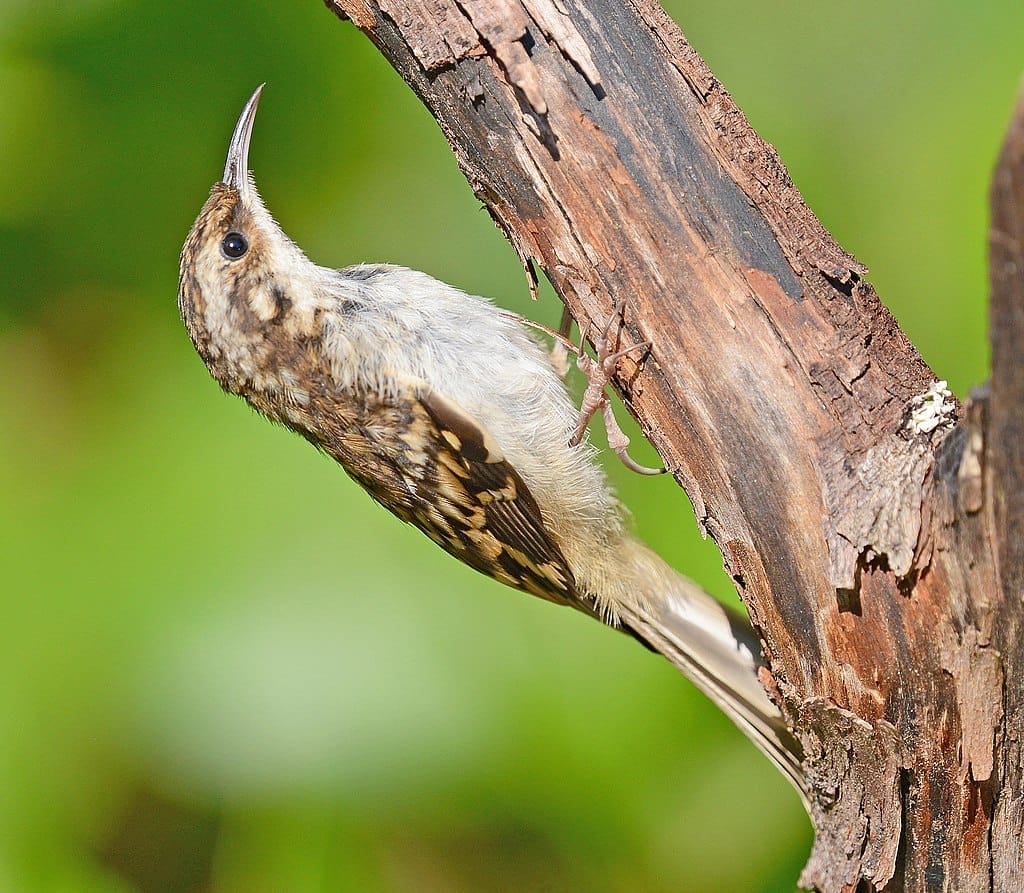
Birds Of South Carolina
Toxostoma Rufum – Brown Thrasher
- Coloration & Markings: The handsome Brown Thrasher has a brown color on its back and wings. It also has a long tail. However, it only has 2 black and two white wingbars. The breast is a mixture of black and brown streaks that turn to a light, watercolor-brown color underbelly. From the neck to the underside of the bill, you will see white lines. This bird also has a white mustache. This bird’s’mustache” is a mixture of white and brown under and slightly above the bright yellow eyes. The top of the head is a creamy, light brown. These birds have black, long, slightly curled bills.
- Size These are large birds that measure in at 9.1 to 11.8 inches in height and have wingspans between 11.4 and 12.6 inches.
- Habitat These birds love dense vegetation and the forest’s edge, which gives them cover while they search for insects or other food.
- Diet –Brown Trashes like many foods, but their favorite foods are peanuts, fruits and Black Oil Sunflower Seeds. Suet is a particular favorite.

Birds Of South Carolina
Supporting Cast (Other Backyardbirds of South Carolina that Might Pay You A Visit)
We have included some birds that are available all year, but we also added a section to allow you to see more birds that are ready to be seen at any time. Although they weren’t given the top-ten, these’supporting birds’ are stars all on their own. These birds are worth a look if you’re out in the backyard.
- Yellow-rumped Warbler
- Mourning dove
- Eastern Bluebird
- House Finch
- Blue Jay
Birds Of South Carolina
Setophaga coronata – Yellow-rumped Warbler
- Coloration & Markings:Yellowrumped Warblers are a soft blue-gray bird with a yellow-rumped back and wings. Some black dots accent the shoulders and wings. There are vertical, white bands at the mid-wing level. Their long, gray tails are black with black dots at the tip. They also have a white breast with black dots that forms a’vest’. This vest gradually loses its density and becomes a snow-white underneath. This bird has distinct yellow splotches under each wing. It also has a blue-gray body with a small, bright yellow, bib and an eyering curve that is white above and below the eyes. This bird has straight, black bill with a medium length. The females are more muted in color, adding sometimes brown to their plumage. In winter, these birds turn a dark brownish-yellow colour with yellow rump.
- Size These birds are 4.7 to 5.5 inches long with wingspans of 7.5 to 9.1 inch.
- Habitat These birds can be found in coniferous and deciduous forests when it is warm, but they are also known to venture out into parks and backyards. These birds are more active in winter and fall, but they can still be seen all year.
- DietYou could tempt a Yellow-rumped warbler with suet, peanut butter, chunky peanut butter and black oil sunflower seeds. If you spot one, add one or more to your feeder. If it notices you, you may just make a friend.

Yellow-rumped Warbler
Mourning Dove- Zenaida macroura
- Colouration and Markings The plump, pretty Mourning Dove is gray in color with large, distinctive black spots. There’s a lot of cream tan color on its wings and back. Their long, gray tails are complemented by a creamy-tan breast and a lightened underbelly. The strongest facial coloration is tan and these birds have a distinctive white eyering that sits in front of a straight, medium-sized black bill.
- Size These birds are roughly Robin-sized and measure 9.1 to 13.4 inches in height with wingspans of 17.7 inches.
- Habitat These birds prefer open areas. They avoid deep forests and will often move on to parks or residential areas.
- Diet Black Oil Sunflower Seeds and White Proso Millet are a simple combination that could win you the love of the Mourning Dove.

Birds Of South Carolina
Eastern Bluebird – Sialia sialis
- Colouration and MarkingsEastern Bluebirds are beautiful in color, with blue-tipped wings and backs. Their small, blue tails are paired with an orange-to-red throat and breast. The coloration at their throat extends to the back of the head. This bird’s underbelly is white, and its rump is also white. Facially, it has a blue face, with a slightly curved bill and medium-sized cheeks.
- Size These birds are approximately 6.3 to 8.3 inches long with wingspans of 9.8 to 12.6 inches.
- Habitat These birds love open spaces, such as meadows, fields, and parks. They will also go to backyards, parks, and golf courses if they feel safe.
- Diet –Eastern Bluebirds can be shy about visiting feeders. However, it is possible to get great results by adding dried mealworms or crickets to your feeder.
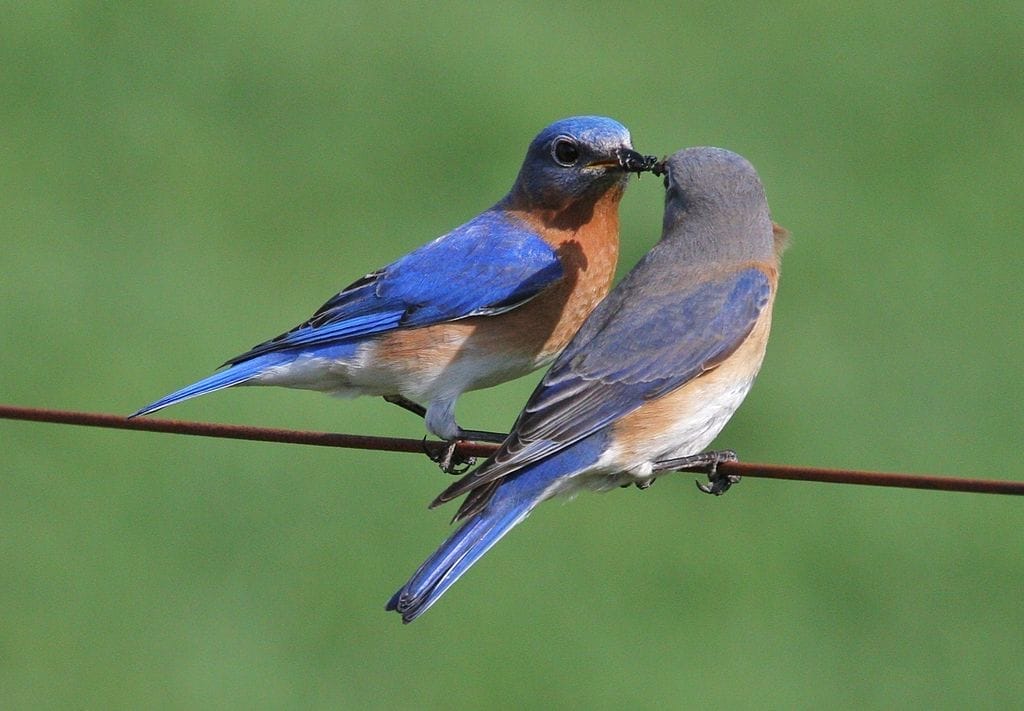
Eastern Bluebird
House Finch – Haemorhous mexicanus
- Coloration & Markings: The House Finch’s back and wings are gray, with horizontal white lines and vertical black lines. Their long, gray tails have some white feathers on the outer feathers. The breast is white with a saturation rosy-red hues. As the coloration approaches the skin, there is a slight streaking. These birds have rosy-red heads and gray skin with some gray around the eyes. These birds have strong, straight silver bills. The females are a slightly different color. They have gray plumage and some thick streaking, but no rosy-red.
- Size These birds are a size of They measure 5.1 to 5.5 inches long with wingspans of 7.9 and 9.8 inches.
- Habitat These birds spend most of their time in urban areas, such as parks, backyards, and farms. They also scout the area via telephone wires. They will visit any feeder that is stocked with food and are happy to go in populated areas.
- House Finches:House Finches eat many foods, but the easiest way to lure them is to add small amounts of Black Oil Sunflower seeds (either broken or small) into their feeder. It’s a favorite food of these little birds. Birds Of South Carolina

House Finch
Blue Jay – Cyanocitta cristata
- Colouration and MarkingsBlue Jays have stunning blue backs and wings. The wings display white wingbars with black patches and the wingbars are covered in white. Tails are symmetrical and have light-blue squares that run along the deeper blue. The breast, underbelly, and facial areas are white. The black line running around the head, starting at the majestic blue crest and ending at the neck, is visible from the side. The rest of their faces are white, with the exception of their thin mask that branches slightly under and between the eyes. The bill of this bird is straight and long.
- Size These birds are roughly Robin-sized and measure 9.8 to 11.8 inches in height with wingspans of 13.4-16.9 inches.
- HabitatBlue Jays are found in the forest’s edge, as well as almost everywhere else in towns and cities. Blue Jays are not afraid to visit inhabited areas. If you spot one, make sure you have enough food for them.
- Diet These birds eat mostly seeds and acorns so a simple lure for Blue Jays would be a mixture of peanuts and Black Oil Sunflower seed. It’s worth a shot! Birds Of South Carolina

Blue Jay
South Carolina Bird Buffet
If you’d like to make a feeder setup with a selection designed to attract the most birds then we have a little advice to give you from ourselves as well as SouthCarolinaBirds.com. You can add the following basic foods to your feeder and get amazing results. Birds Of South Carolina
- Black Oil Sunflower
- Nyjer thistle
- Safllower
- Suet
- Peanut butter with a creamy texture
- Peanuts
- White Proso millet
South Carolina Birding Hot Spots
The state of South Carolina has many great spots to view birds, and the Chirparazzi knows all of them. If you’re looking for a chance to photograph or get a glimpse at the Aerial celebrities in your area, they have a few suggestions. These sites are located around the compass points to make it easy for you to locate them. However, if you are not able or willing to travel far from these locations, we will provide a link that will allow you access other sites. If you have the chance to enjoy a wonderful day of birding, make sure to visit one or more of these places. Birds Of South Carolina
- Northern hotspot– Palmetto Trail, Peak to Prosperity Passage
- Eastern hotspot – Savannah Valley Railroad Trail
- Southern Hotspot– New River Linear Trail
- Western hotspot – Savannah Valley Railroad Trail
- Central hotspot – Williston Rail-Trail
You can find detailed descriptions of each location, as well as information about visiting these locations and which birds you might see there, at
Read More Article: Blue Birds in Michigan
Read More Article: Why Do Birds Suddenly Appear?
Read More Article: How Do Birds Mate-Everything Explained
Read More Article: Bird Flying
Read More Article: Tropical Birds- Top 8 Tropical Birds
Read More Article: CAN DOGS EAT BREAD


